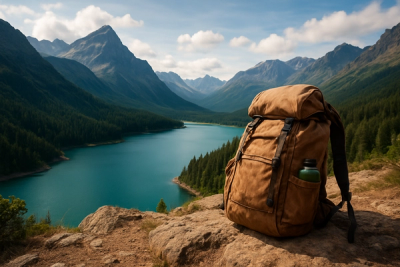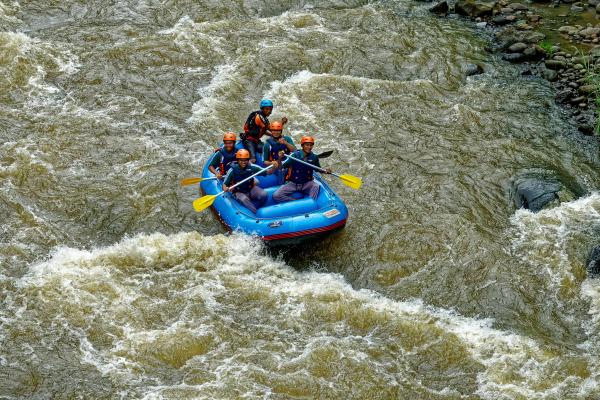Off-Peak Travel Hacks: Save Big & Avoid Crowds (India & Abroad) — the stuff I actually did (and messed up)#
I’m typing this from a noisy chai stall near a bus stand in Kochi, because honestly that’s where half my travel wisdom comes from — leaning on sticky tables, overhearing other people’s plans, making last-minute ones of my own. Off-peak travel is my jam. I don’t mind the odd drizzle or chilly mornings if it means cheaper rooms, shorter lines, and locals who aren’t totally exhausted from high-season madness. I did a bunch of shoulder and off-season trips through 2024 and into early 2025, both in India and abroad, and yeah — there’s some real hacks that worked for me, plus a couple facepalms I’m lowkey still mad about.¶
What “off-peak” looks like in 2025 (it’s not just pick a random month)#
So, 2025 travel trends are funny: everyone says they love “shoulder season,” which kinda makes shoulder season busier than it used to be, but still nothing like peak. Dynamic pricing is wild — flight and hotel prices jump around like crickets — but off-peak still usually means 20–50% cheaper rooms and way better availability. In India, monsoon and post-summer shoulder are golden. Abroad, late winter and late autumn are still undervalued. People are traveling smarter, mixing remote work weeks with short trips, and picking weekdays over weekends, which is… actually a hack that still works. Tuesdays, Wednesdays — keep those sacred.¶
- India off-peak sweet spots: Goa during monsoon (June–Sept), Kerala backwaters in July–Aug, Ladakh in late Sept–Oct, Rajasthan in early Sept or March, Northeast India right after the rains when it’s clean and quiet
- Abroad off-peak I loved: Paris in Feb (cold but cozy), Italy in Nov (foggy but romantic), Bali in Jan (rainy, yes, but green and cheap), Japan in late Nov after the leaf crowds dip
Monsoon Goa was my gateway drug to off-peak. I went in late August last year and again early Sept this year. The beaches weren’t empty-empty, but like a chill weekday vibe, especially in South Goa. I stayed near Benaulim — boutique places that go for ₹7k–15k in December were quoting ₹2k–₹4k including breakfast in monsoon, if you message them directly. Food is cheaper and easier too. And because everything’s green and the sky pulls a thousand moods, your photos don’t look like everyone’s same blue sky beach pic. Downsides: a few days of heavy rain, some watersports shut, and the sea can be rough. Upside: spa deals, café seats, and surfers who don’t gatekeep.¶
Kerala backwaters in July — I swear by it#
I did Alleppey in a soggy week and it was dreamy. No houseboat traffic jams, just fishermen and egret birds and those sudden sun breaks that feel like a movie scene. Prices? In off-peak I found good houseboats around ₹7k–₹12k (double occupancy) vs ₹12k–₹20k in peak. Homestays ran ₹3k–₹5k for nice ones with AC and proper breakfast. Pro tip, don’t book the cheapest boat — I did once and me and him went in circles because the captain had a cranky engine. In 2025 a lot of places added solar panels and better waste rules, so ask about that if you care. You should, actually.¶
Abroad off-peak: empty museum mornings and raincoat romance#
Paris in February was cold enough that my cheeks forgot how to feel feelings, but wow the city was mine at 9am. I walked right into the Orsay, barely waited at Sainte-Chapelle, and found hotels in the €90–€140 range that shoot up to €180–€300+ by late spring. Hot chocolate becomes personality. Visa-wise for Indian passport holders, Schengen still needs a visa (that hasn’t magically changed), and the EU’s ETIAS system is supposed to go live in 2025 for visa-exempt travelers, but that’s not for us Indians — still we need the regular visa. Just keep an eye on roll-out dates because they keep shifting. Italy in November was moody and lovely and truffles everywhere. Foggy Florence mornings with almost no tour groups? Chef’s kiss.¶
Bali in January — people told me not to go because rain, but I’m stubborn. And it was perfect in that lush, wet way. You get quick afternoon downpours, then blue hour magic. Hotels and homestays were abundant, $20–$35 for solid Ubud rooms with pools. Visa-on-arrival for Indians was around IDR 500k last year, and you can now apply e-VOA online in advance to skip queues — I did that and felt very smug. Scooter rentals were flexible, roads calmer than July madness, and waterfalls loud. Bring a proper rain shell and just roll with it.¶
2025 visa & entry notes I wish I knew sooner (double-check before you book, seriously)#
- Schengen (Europe): Indians still need a visa. Appointments can be tight pre-summer, easier in late autumn/winter. ETIAS is for visa-exempt folks and may start sometime in 2025 — not for Indian passport holders
- UK: still a visa for Indians in 2025. ETA roll-out hasn’t included India yet. Priority processing exists but pricey
- UAE: 5-year multi-entry tourist visa is a thing — good for frequent visitors if you can swing the paperwork. Regular tourist visas still common via airlines/agents
- Thailand/Malaysia: both ran visa-free or simplified schemes for Indians at various points recently; Thailand especially flip-flopped with pilot exemptions. For 2025, check the latest before you fly, don’t assume
- Singapore: you still need a visa, but arrivals are smooth with the SG Arrival Card. UPI works in Singapore for some payments through the India–NETS linkage — handy but not everywhere
- Japan: eVisa options exist for Indians via designated agencies/online portals. Shoulder season makes appointments saner
Transport & booking hacks that worked (India + beyond)#
India trains: shoulder season means easier Tatkal anxiety. The newer Vande Bharat routes have expanded a bunch — grab them on weekdays to dodge families and big groups. Flights? Red-eye Indigo or Akasa to save cash, and mix in Air India premium economy when prices dip midweek (I know, fancy, but sometimes it’s only a bit more than regular in off-peak). Keep an eye on the Air India–Vistara merger vibes in 2025 — network changes can open weirdly cheap routes for a while. Abroad, I’m team “fly Tuesday or Wednesday” and “book two one-ways if it saves money.” Meta-search first (Skyscanner, Google Flights), then check direct airline sites for extra perks or lower fees. Rate parity is kinda dead these days, so message hotels directly with a friendly “Hey, do you have any rainy-season specials?” Worked for me in Goa and Ubud multiple times.¶
Safety & season reality checks in 2025 (aka why mornings saved me)#
- Heatwaves have been hitting earlier and harder — in India and Europe. Off-peak shoulder still gets hot. Do big sightseeing pre-11am, then siesta like you’re in Naples
- Monsoon landslides happen in Himachal/Uttarakhand. Check local advisories before driving mountain roads, and keep buffer days
- Wildfires in southern Europe have been a summer reality. Off-peak helps, but stay flexible and insured. Travel insurance with trip interruption is worth it, trust me
- Connectivity: eSIMs saved me. In 2025 more carriers support easy eSIM onboarding. Pay attention to fair-use caps or you’ll mysteriously run out of data in a museum basement
- Money: UPI is expanding abroad (I used it in Singapore and saw it in parts of the UAE); still carry cards. Dynamic currency conversion? Always choose local currency, not “convert to INR” at terminals
Where I stayed and roughly what it cost me (off-peak wins)#
I’m a mix of cozy budget and small splurge. Monsoon Goa boutique near Benaulim: ₹2,000–₹3,500 per night with breakfast, in rooms that hit ₹10k–₹15k at Christmas. Alleppey homestay with canal view: ₹3,000–₹5,000 and the auntie’s appam was basically Michelin. Ladakh in late October, simple guesthouse in Leh: ₹1,500–₹2,500, and no altitude drama thankfully. Paris in Feb: €95 for a small Left Bank hotel, €140 near République when I wanted an elevator that didn’t look haunted. Rome in November: €80–€120 in cute B&Bs around Monti. Bali Ubud: $22 for a family-run place with a rice field sunrise, $35 when I got picky about a pool. Prices dance a lot in 2025 — message, negotiate politely, and avoid weekends if you can.¶
- Book stays Mon–Thu when possible — weekend pricing is still criminal in 2025
- Stack deals: meta-search, then direct message. Ask for “off-peak” specials, monthly rates, or breakfast-included swaps
- Hold refundable rates until visas are confirmed. Learned this the hard way when my appointment shifted and I ate a non-refundable fee
Stuff I messed up (so you don’t, please)#
I booked a non-refundable Paris rate before my Schengen appointment got moved. Big oof. I also didn’t check Ladakh road closures early enough — Khardung La reopened a day later and I had a grumpy jeep driver and an extra hotel night. In Bali, I ignored the rain forecast and packed exactly zero waterproof shoes, which was dumb. And once I forgot the SG Arrival Card thing for Singapore until the night before. That’s fine, but anxiety doesn’t make airports more fun. Another time in Goa, I assumed watersports were always running and nope — monsoon rules are strict for safety and that’s good actually. Plan B afternoons matter.¶
“Off-peak is where places breathe. Fewer people, slower pace. You either fall in love with the moodiness… or you don’t. I do, every time.”
Tiny hacks that don’t look like hacks, but kinda are#
Eat lunch at fancy places instead of dinner — off-peak lunch menus are kinder. Hit sunrise tourist spots before breakfast, nap later. Use the hotel’s WhatsApp — in 2025 most small stays run on it, and you can request airport pickups or early check-ins without painful phone calls. Midweek ferries and trains, whenever possible. Bring a tiny power bank even in cities; brownouts and sudden dead phones are just… a vibe we don’t want. And honestly, travel light during shoulder season cause you’ll be juggling umbrellas and sweaters. I refuse to carry more than a 40L backpack now. My back thanks me.¶
India vs Abroad off-peak — what’s actually different#
India’s off-peak is about weather extremes (rains or heat), but prices drop dramatically and locals still, like, live their life around the season. Abroad, especially in Europe, off-peak is about rhythms — shorter hours, early closures, but peace. Asia’s tropical off-peak can be pure green bliss if you don’t mind storms. Visa complexity remains for Indians in 2025, so build buffer days, keep refundable rates until you physically hold the visa sticker or confirmation. I contradict myself sometimes, saying be spontaneous then telling you to plan visas, but that’s just the reality. Embrace both.¶
Final thought before my chai gets cold#
If you’re weighing off-peak, try one shoulder trip first, somewhere you already kinda know. Then go off-road. Make mornings your friend, and don’t negotiate every rupee when the stay is someone’s family home — hospitality isn’t a spreadsheet. 2025’s travel vibe feels more grown-up: people are tired of crowds and performative trips, they want quieter stories. Same. If you want more weirdly specific travel notes like these, I drop more on AllBlogs.in — it’s where I compare monsoon beaches vs winter museums and complain about umbrellas I always forget to pack.¶














